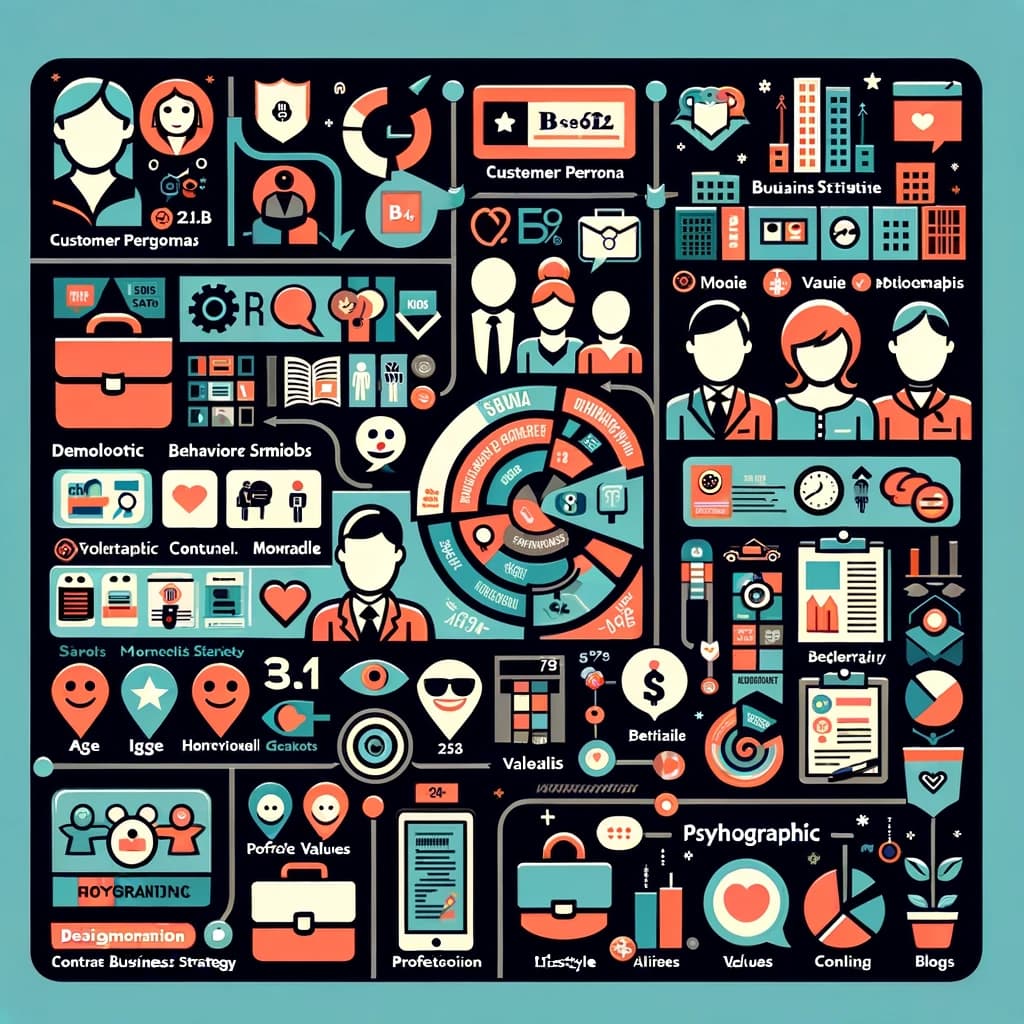 Struggling to connect with your target audience? Understanding your customers through well-crafted personas can bridge that gap and drive strategic success.
Struggling to connect with your target audience? Understanding your customers through well-crafted personas can bridge that gap and drive strategic success.
What are Personas?
Personas are semi-fictional detailed representations of a segment of your ideal customers based on data and research.
Other names for Personas:
Personas are also often called:
- Customer Personas
- Buyer Personas
- Marketing Personas
- User Personas
- Audience Personas
- Customer Archetypes
- Buyer Profiles
- Customer Avatars
These different terms are sometimes used in specific contexts. But they mean the same thing.
What are Personas used for?
Personas help businesses understand and relate to their customers more effectively. They help businesses understand exactly what they need to do to attract and delight their customers.
This can lead to more effective strategies:
- products that better meet customers' needs,
- more targeted sales and marketing messages,
- sales and marketing processes that can communicate these to customers more effectively, and
- customer service strategies that better serve customers.
Incorporating personas into other analyses, such as SWOT analysis, can elevate this analysis, revealing strengths and weaknesses in specific customer needs. Utilising the Strategy Canvas alongside personas can help visualise how your offerings stand out in the market.
Who should you develop personas for?
You can develop personas for everyone involved in the buying decision, buying process or consumption of the product.
For example:
- In a D2C environment for children's toys, you might consider:
- The children who will play with the toys,
- the friends and family who buy the toys for them, and
- the parents who supervise their play.
- In a B2B environment for enterprise software, you might consider
- the people who evaluate and choose the software,
- the people who install and configure or integrate it,
- the people who will use it, and
- the people who sign off the budgets and payments.
- In a B2B2C environment, you might consider not only
- the customers, but also
- the distributors who provide it to them.
What information do Personas include?
Customer of buyer personas typically include the following types of information
- Jobs-to-be-Done: Things your customer needs to achieve. See Jobs-to-be-Done
- Unmet Needs: Things your customer needs (to achieve their jobs-to-be-done) which are not currently available.
-
Demographic Information: This includes age, gender, income, education, and family status. For example, a persona might be a 30-year-old, university-educated female with a mid-range income.
-
Behavioural Traits: This covers the customer's attitudes, motivations, goals, and pain points. For instance, the persona might prioritise eco-friendly products and have concerns about product sustainability.
-
Professional Information: Relevant for B2B personas, this includes job role, industry, and company size. For example, a persona might be a marketing manager in a small tech startup.
-
Psychographic Details: These are the psychological attributes, like values, interests, lifestyle, and hobbies. A persona might value health and fitness and spend free time in outdoor activities.
-
Media Consumption: This covers where the persona gets information, such as specific social media platforms, magazines, or blogs. For example, they might be active on LinkedIn and follow tech news sites.
-
Purchasing Decision Process: Understanding how the persona makes buying decisions, what the role in the purchase process is, what factors are most influential, and the role of reviews or recommendations.
Some organisations give their personas fictitious names and photographs to make them seem more vivid.
Corporate profiles
In B2B and B2B2C environments, in addition to the personas, it can be useful to provide corporate profiles of the organisations they represent.
Corporate profiles can include
- industry,
- size,
- target market and
- how they add value, etc.
If your business sells to other businesses, you should develop personas for those businesses as well as for the people within those businesses that you will have to deal with.
Additional information
Additional information you might want to include is:
- Differences in personas at different stages of the buying process. For example:
- Awareness, Interest, Decision and Action (AIDA), or
- Prospects, existing customers, past customers, detractors, doubters, influencers, etc.
- Anti-personas. Anti-personas are descriptions of the type of people you don't want as customers.
Your persona descriptions should be as vivid as possible. This helps to bring the segment alive.
How to develop personas
- Assemble a cross-functional team.
- Start with your strategic goals and objectives.
Ask: What decisions will these personas inform? Which customer behaviours or segments most affect our goals?
This ensures your personas are actionable, not just descriptive. - Gather data from a wide range of sources. See: Make sure your personas are evidence-based below.
- Identify patterns and clusters of behaviour.
- Build rich persona profiles.
- Validate and refine
- Operationalise: Integrate personas into:
- Product Development (e.g. prioritising features)
- Marketing Campaigns (e.g. tailored messaging)
- Customer Journeys (e.g. channel preferences)
Tips and Traps
- Make sure your personas are evidence-based.
It's easy to invent personas based on what you think people are like. But such assumptions can be even more dangerous that not analysing personas at all. Ensure your personas are well-researched, both quantitatively and qualitatively. You should talk to real people who represent your personas on a regular basis.
Evidence can come from a wide range of sources, such as: market research (3rd party as well as customer surveys and customer interviews), CRM systems, web analytics and social media analytics.
See also: - Avoid coming up with too many personas.
Too many personas just add noise to the conversation. You don't need individual personas to capture every possible combination of attributes in your target market. Think of personas more like caricatures, which each exemplify a small number of key distinguishing factors. - Don't over-generalise.
It's important to come off the fence and get quite specific about your personas. Your personas don't need to be so general that they encompass every possible customer you could ever contemplate. The more specific they are, the more useful they will be. - Don't think you can set-and-forget your personas.
Developing personas is not a one-and-done exercise. Markets are continually evolving, and customer expectations change with them. It is important to keep your personas under review, refresh and update them, and then review the decisions they impact. - Don't treat personas as just a marketing exercise.
A cross-functional view, incorporating marketing, sales, customer services and operations, will lead to much richer and more robust personas, as well as greater adoption and more organisation-wide integrated responses.
Where to find Personas in StratNavApp.com?
In StratNavApp.com you can capture persona descriptions in the Customer Segment descriptions. These can be found on the:
Ready to deepen your customer understanding? Start creating detailed personas with StratNavApp.com today and align your strategy with your audience's needs.
👉 Sign up or log on to StratNavApp.com now to start adding your customer and buyer personas to improve your business strategy.
OR
📅 Book a free demo of StratNavApp.com.
